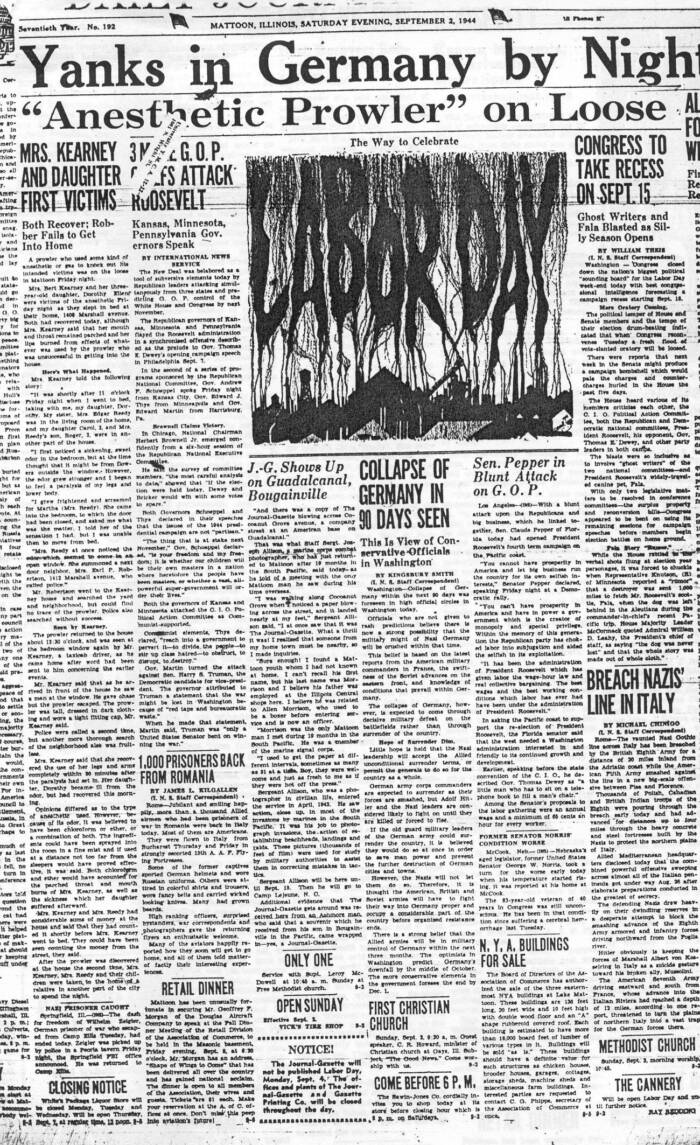The Mad Gasser Of Mattoon: Real Or Mass Hysteria?

Eastern Illinois UniversityThe Mad Gasser of Mattoon ended up being an example of mass hysteria.
On the morning of Aug. 31, 1944, Urban Raef of Mattoon, Illinois woke up to a strange smell in his home and a feeling of nausea and weakness. He initially suspected a gas leak, and when he turned to his wife to consult her on this theory, he found that she had been partially paralyzed.
Soon, others began to report experiencing the same phenomenon. Early the next morning, another family nearby reported waking up with similar symptoms. And later that night, a woman named Aline Kearney claimed to have smelled an intense, sweet odor that grew steadily stronger — and as it did so, she started to lose feeling in her legs.
Chillingly, when her husband Bert returned home that night, he spotted a strange man lurking outside the bedroom window, wearing dark clothing and a cap. Bert attempted to chase the man down, but lost track of him.
Afterward, local authorities issued a lookout warning for a man fitting the description Bert Kearney had provided. Word of the alleged gas attacks quickly spread around town, and soon, everyone was on the lookout for the Mad Gasser of Mattoon, who was said to be pumping gas into residents’ homes.
About 30 more reports of “attacks” surfaced over the next two weeks as the town erupted into a terrified frenzy. The situation became so volatile that even the FBI got involved. However, their arrival only seemed to heighten residents’ panic, as it implied that the crimes were too serious for local police to handle.
Finally, on Sept. 12, investigators announced that the mysterious smell had likely come from gas from a nearby war plant. The police later declared that many of the “gasser” attacks were likely the result of mass hysteria. After this announcement, reports of these attacks sharply declined.
While no one knows the truth behind what caused this shocking example of mass hysteria, some have suggested it may have been perpetuated by women whose husbands were off fighting in World War II, and who were feeling paranoid amid growing wartime fears and uncertainties.





